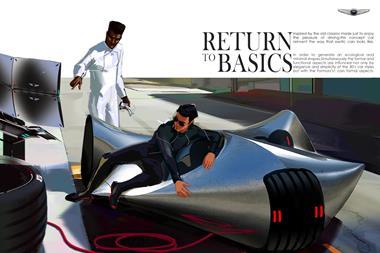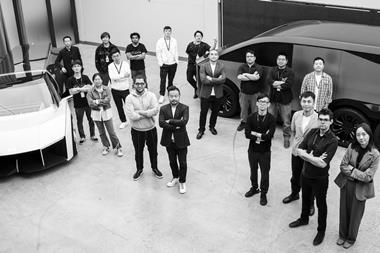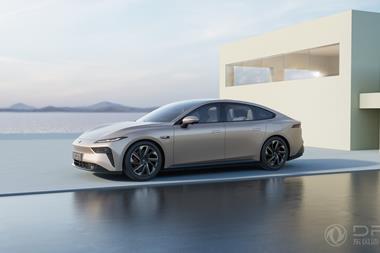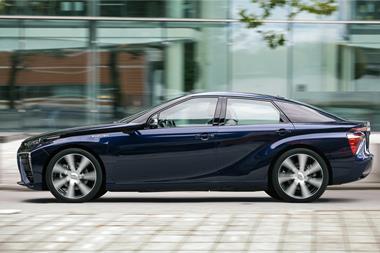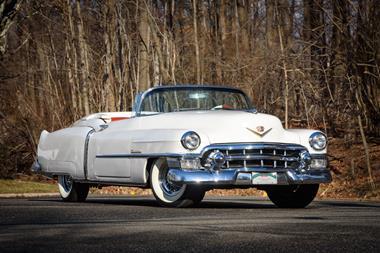CDN: What does Magna Exteriors offer to designers?
Larry Erickson: Designers tend to have a uniquely external perspective in car companies. They are influenced by what is innovative in the design world beyond just cars and they also tend to be well connected with education, making time to look at students’ work. As a result, they often bring new ideas into a company. They’re motivated by what’s new and often by things that may be new to their company.
Magna Exteriors can help with that process because we develop and manufacture so many different vehicle components, we contribute to so many systems in a vehicle and our research and development extends all the way from material science to complete systems manufacturing. We experience a wide array of development and problem solving, which makes us an effective collaborator.
Magna Exteriors Global Director of Industrial Design Larry Erickson
CDN: You’ve worked in chief designer roles at both Ford and General Motors, and for Rivian Automotive, a start-up company. What drew you to Magna?
Curiosity. GM has 100 years plus of history, as does Ford. They’ve developed many built-in processes about how to solve problems. At Rivian, there was none of that. It completely opened up the potential solution set, but also created a huge challenge that gave me a big appreciation for what goes into building a car from step one.
At Magna we’re looking at everything from basic materials science to the exact cycle time required to make a part, down to the millisecond. It’s a very granular approach to solving problems and an enormous learning opportunity.
CDN: What sort of design capabilities does Magna Exteriors have in-house and how are they used?
Our Industrial Design team is similar to a small program team at a car company. We have designers plus surfacing and packaging people. Our purpose isn’t to make cars, but to communicate ideas to the larger team and our customers. We work in Alias building surfaces that are used in development and collaboration with stakeholders. Within the larger Magna some of these concepts and ideas are developed all the way to finished products.
We are not trying to style things for customers – that’s their identity, they should do that. But where a specific design goal requires an engineering capability, manufacturing development or material innovation, then we need to start collaboration early in the development cycle. We hope by having a collaborative relationship with customers we can get an indication of where their curiosity lies, and where our capabilities need to grow. For some problems, neither the solution nor a fully defined problem yet exist, because the problem is still forming.
Magna’s active front deflector on the 2019 Ram truck is the first high-volume application
CDN: Can you give an example of an emerging problem?
Aerodynamic performance for full-size trucks and SUVs presents a different set of aerodynamic problems than a sedan. Together with FCA, Magna Exteriors designed and engineered an active grille shutter and active front deflector system. Ram has done a great job of designing one of the most aerodynamic pickups available today, but changes in technology will drive expectations of even more capability and even greater efficiency. As time moves on, the focus on aerodynamics will continue and as changes in vehicle configuration due to changes in drive systems occur, new opportunities will be available.
Magna’s MAX4 shows how sensor integration enables Level 4 autonomy
CDN: You’ve designed a wide variety of vehicles, from a presidential limousine to custom cars for rock stars, as well as lauded designs like the 2005 Ford Mustang. How has that experience shaped your role at Magna Exteriors?
Past experience tells me designers and design teams have the skills, passion and imagination to effectively contribute to solving new problems, whether for a high-volume production car or for one of one. With cars, the complexity of problems has been increasing. Powertrain developments and potential autonomous capability create more emphasis on effectively envisioning the next problem. My role at Magna is to contribute to that process using all the skills our team has.
On the ’05 Mustang, there were dozens of designers and hundreds of development engineers. One of the key advantages they had was a shared vision of what that car was supposed to accomplish. That kind of energy requires collaboration, and design is a key part of that process.
Another thing that shapes my role is knowledge of the design community and designers’ interests. So I know that Jaguar’s Ian Callum has a ’56 Chevy and a ’32 Ford three-window coupe. A great many designers’ enthusiasm for things automotive is far more than work responsibilities. Whether it’s Pebble Beach or the Goodwood Festival of Speed, auto enthusiasm runs strong through the design business, for good reasons. Design creates an emotional connection with a vehicle, and that connection is critical to the long-term strength of the brand and the business.
Magna launched the first carbon fibre hood for mass production on the 2016 Cadillac ATS-V and CTS-V
CDN: What are you looking forward to at this year’s Geneva show?
I think Geneva has always had a little bit more of that emotional potion. It feels like a neutral ground where you can stand back from the corporate onslaught of Paris or Frankfurt or Detroit.
Everyone knows Magna and we’re backing CDN’s Design Night because it’s a great place to have a conversation. I think now more than ever, because of the two paths or even multiple paths that the automobile could go down, there’s going be lots to look at and lots to consider.
Working with manufacturers early in the design and development process on complex components, such as thermoplastic liftgates, maximizes benefits for manufacturers and consumers









